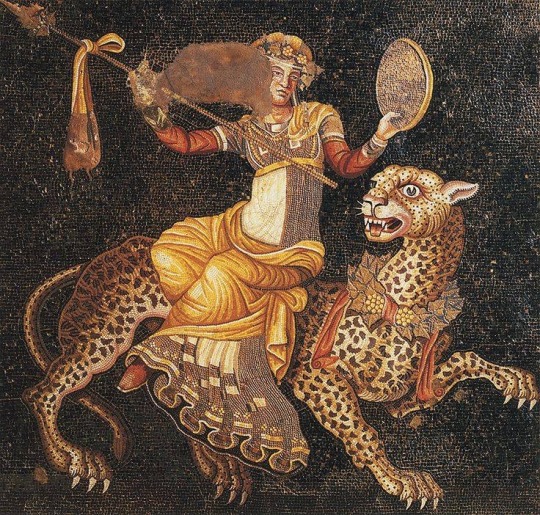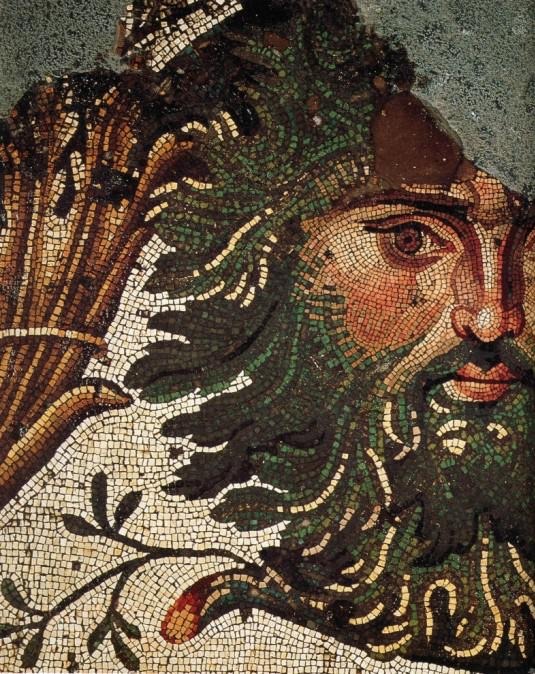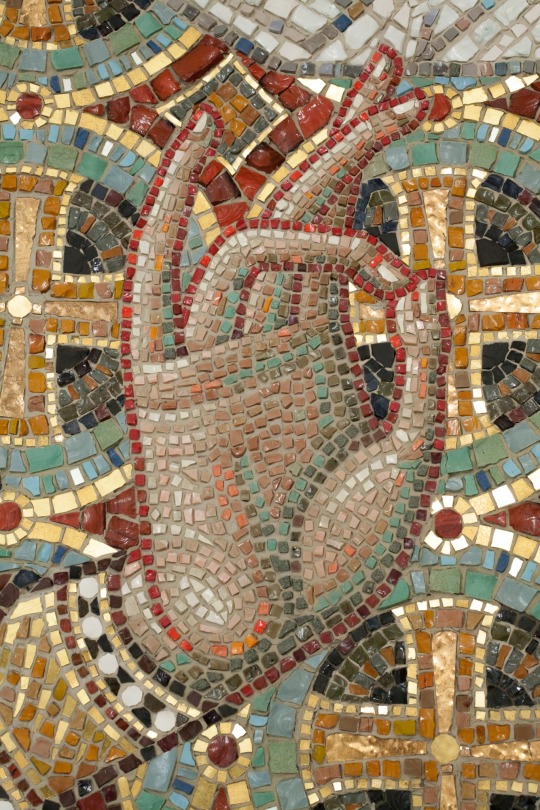Text
Something must be wrong with me, I haven't talked about the beadnet dress in forever.
It consists of seven thousand faience beads in blue green and blue to imitate turquoise and lapis lazuli. It is 4600 years old (the threading is modern, but the beads were found in their original pattern so this reconstruction is as accurate as it can be). It is one of the most gorgeous garments in existence and was owned by a woman who was a contemporary of king Khufu.

The dress was found in her tomb in Giza, known as Tomb G 7440 Z, and it's the earliest known garment of this type.
26K notes
·
View notes
Text
it is currently too many degrees out so I am listening to Phil Ochs and browsing anglo saxon manuscripts looking for fun illustrations and marginalia. autistic joy.
i'll post some highlights here :) citations and descriptions in alt text



213 notes
·
View notes
Text

protect trans kids! dragon stomp anyone who says differently!
254 notes
·
View notes
Photo


Group portraits of an African American family in a meadow. C.1910.
5K notes
·
View notes
Text

1606 Unknown artist - Portrait of the sons of Ambrosio Spinola, 1st Marquis of the Balbases in front of the port of Genoa
(Fundación Casa Ducal de Medinaceli)
106 notes
·
View notes
Text

The Dabous Giraffes - neolithic petroglyphs found in Saharan Niger estimated to be 6,000 to 8,000 years old. The bigger of the two giraffes is 5.4 meters long and is the largest known petroglyph in the world.
11K notes
·
View notes
Text

1978 in Ukraine: Saint George Cathedral, Vydubychi Monastery, Kyiv in summer.
177 notes
·
View notes
Text

Vessel depicting the assault of bean warriors ... bean warriors???
hmmm...

huh... wild things going on in ancient Peru
Moche culture, Peru, 100 BC - 500 AD
from the Art Institute of Chicago
359 notes
·
View notes
Text
Around 1409 the impossible happened: the veil between the temporal world and the eternal world glitched, and Margery Kempe got a taste of Paradise. While lying in bed with her husband, Kempe heard such a celestial melody resounding that she leapt up and declared, “It is ful mery in Hevyn” (It is so merry in Heaven), and she became determined to do whatever it would take to inhabit that experience forever (Kempe 11; Bale, Book 15). Kempe realized that she had never experienced anything so pleasurable, not even during sex. And she’d had a lot of sex, always thirsty for the delights of her husband’s flesh—at least before this moment. Later in life, she would reflect how “she had, in her youth, had many delectable thoughts, fleshly lusts, and excessive desire for his body" (Kempe 181; Bale, Book 162). This heavenly pleasure was different, not unrelated to sex but more fulfilling. In fact, Kempe will describe such contemplative union with God, along with the practice of sharing these experiences with others, as “dalyawns” (dalliance), a term that draws out the erotic implications of her experience. Kempe insists that dalliance doesn’t just feel good to her soul, it feels good to her body. Later in Rome, her dalliance with Christ leaves her feeling satiated and drunk: “Then her soul was so deliciously fed with the sweet conversation [dalliance] of our Lord and so filled with His love, that, like a drunkard, she turned herself first to one side and then to the other, with much weeping and loud sobbing, unable to keep herself steady because of the unquenchable fire of love which burned very fiercely in her soul" (Kempe 98; Bale, Book 90).
James C. Staples, "Synguler: Margery Kempe's Irregular Desires for a Queerer Present"
124 notes
·
View notes
Text










Africa & Byzantium exhibit at @clevelandmuseumarchivist pt. 1/2
54 notes
·
View notes
Text
I never did a long thing about scrimshaw, so it’s time! At 1 am, apparently.
I think scrimshaw is one of the most fascinating material goods to emerge from the history of the American whaling industry (which is the context I’m discussing here, though of course the artform exists across numerous eras and cultures outside this brief blip of nautical history).
It’s one way to see amatuer art that usually doesn’t often survive in other forms. To see the art project of an ordinary man who was bored and needed something to do with his hands. Others were highly skilled craftsman, creating intricate engravings or mechanically expert tools. The most common scrimshaw was images etched on sperm whale teeth. Sometimes those images came from the maker’s own imagination and sometimes they were copied illustrations. Ships & whaling scenes, women, mythical figures, and patriotic symbols make up the bulk of the visual language in those pieces that survive.
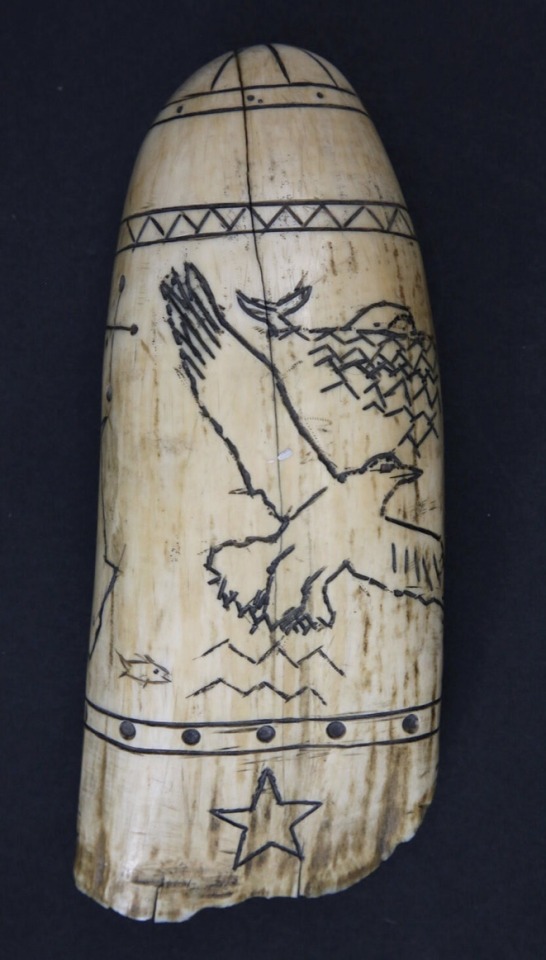
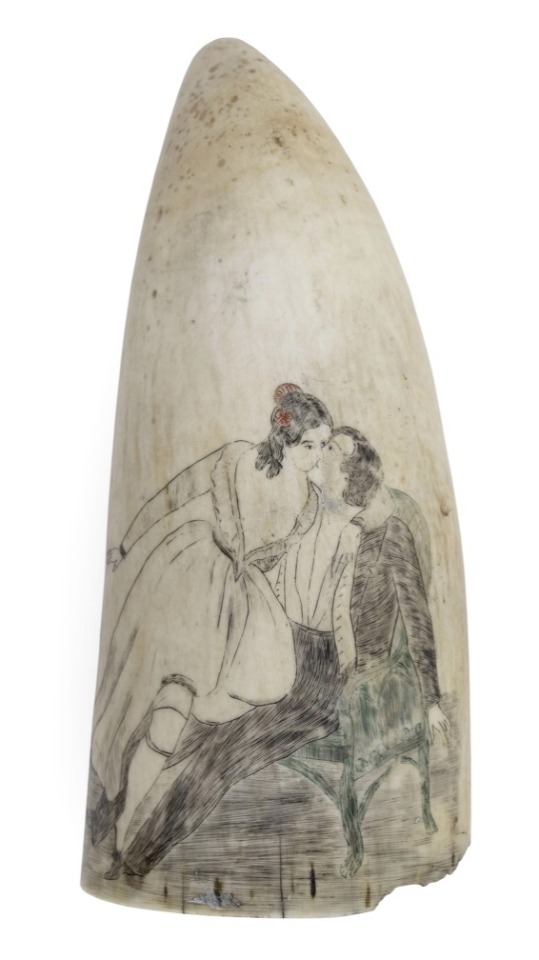
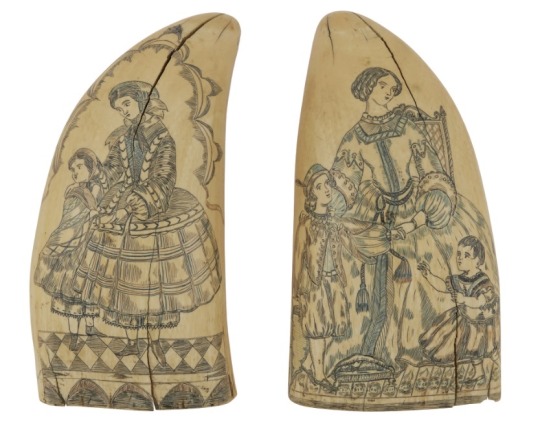
But alongside the teeth were all a manner of carved items: canes, candle holders, pie crimpers, children’s toys, sewing boxes, yarn swifts, corset busks. So much bone fashioned into quiet little homegoods. And it’s that contradiction within scrimshaw that fascinates me. The brutality of the industry, this ivory from an animal that frankly died terribly, that’s then softened into a little domestic item. An object that could have hours to years of work put into it. Some were made to be sold but many were made as gifts. In the long stretches of boredom at sea, in the lull between back-breaking work and life-threatening terror, scrimshaw gives a window into where the minds of these men continually turned. It shows where their hearts were and what they were holding on to over all the years they spent adrift in saltwater and blood and oil. That’s the poetry I see in scrimshaw. Pain and love and longing and creativity and playfulness all bound together in these complicated little pieces that found their way out of the hands of their anonymous makers to preserve a small part of their story.
Some scrimshanders names are known. Frederick Myrick is one of the most well known American whalers, not so much for the scope of his life (of which little is known) but for his scrimshaw. Born in Nantucket in 1808, he first went whaling in 1825 on the Columbus and then again on the Susan 1826-29. In the last few months aboard the Susan, Myrick engraved over 30 sperm whale teeth, all depicting the ship he was on (though there are a handful that depict other vessels). He signed and dated nearly each one. These pieces are often referred to as ‘Susan’s Teeth’ now, and when one comes up at auction it’s not unusual for it to sell for six figures.
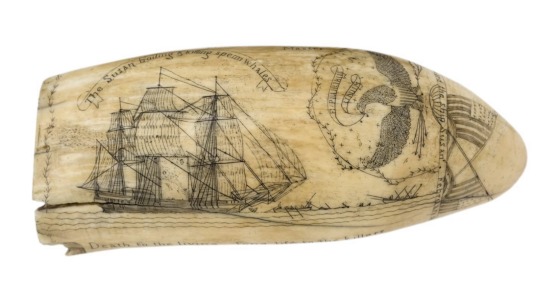
Many of the teeth Myrick scrimshawed included an inscribed couplet of his devising: A dark wish for luck that succinctly gets at the violent and unstable heart of American whaling.
“Death to the living, long life to the killers Success to sailor’s wives, and greasy luck to whalers”
Sometimes large scenes were etched on panbones as well.

Moving from scrimshaw on teeth and jawbones, pie crimpers are some of the more common sculptural items. Popular motifs included animals (dogs, snakes, and unicorns/hippocampus are big), body parts (mostly clenched fists or lady’s legs), and geometric designs.
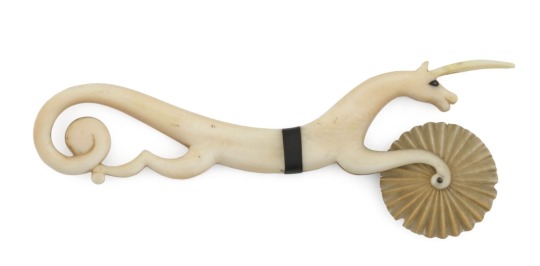
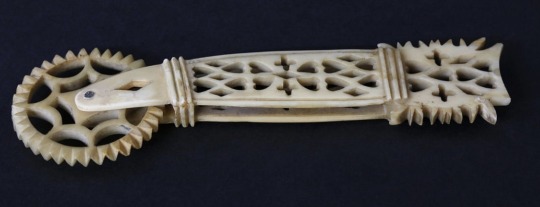
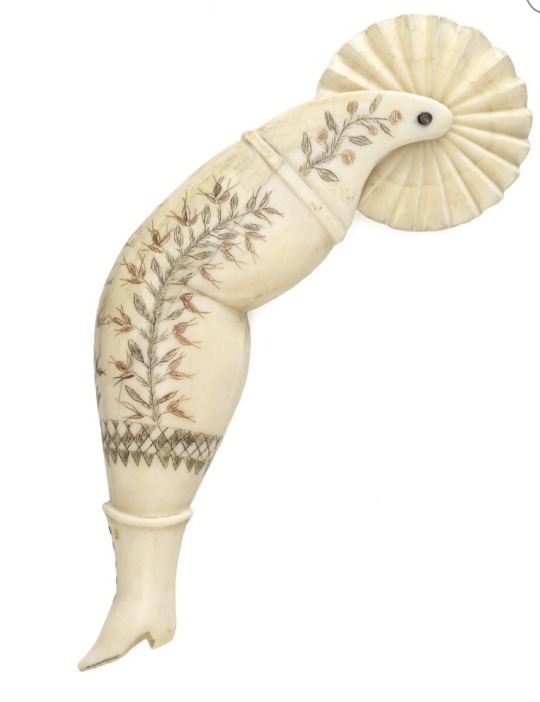
Others were more mechanically complicated, such as automatons and children’s toys with moving parts and gears. Here’s one of a small rocking sailboat, perhaps made for someone’s child or younger sibling.
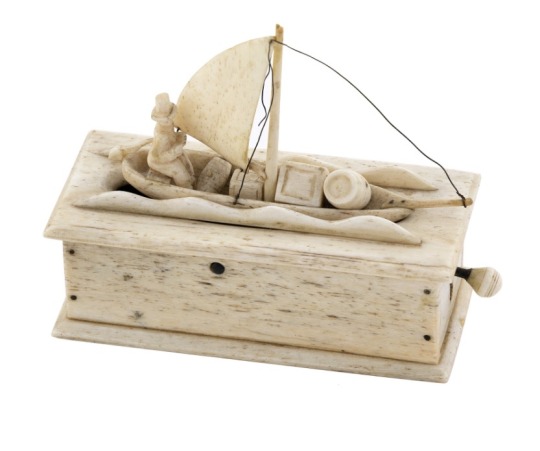
Sometimes a particular creative fellow created something more eccentric, like this wild writing desk kit fashioned out of a carved panbone and sperm whale teeth.

Another frequently scrimshawed object was a corset busk that would be slid into the front of the garment in order to maintain the posture. A rather private item compared to others. And one with a very on-the-nose message of wearing close to one’s heart the memory of someone who’d be gone for 3-4 years, who might never come home again. On some level, so many of these daily objects whispered ‘forget me not’, ‘think of me while I’m gone’.

There’s something tender to all the various domestic items that were fashioned on the job so long and far from home, but it’s the yarn swifts that really captivate me. They were one of the most complicated pieces of scrimshaw to make, with over one hundred different pieces that would have to be carved. It could take someone the length of the voyage (2-4 years) to complete a single one. Unlike teeth which were comparatively very quick to make and were frequently intended to be sold, it’s very unlikely that a swift was made with the aim of selling it because of the significant labor that went into it. They were almost certainly all gifts, and very special ones at that. Every time I see one I can just feel the love towards its intended recipient radiating off of it.
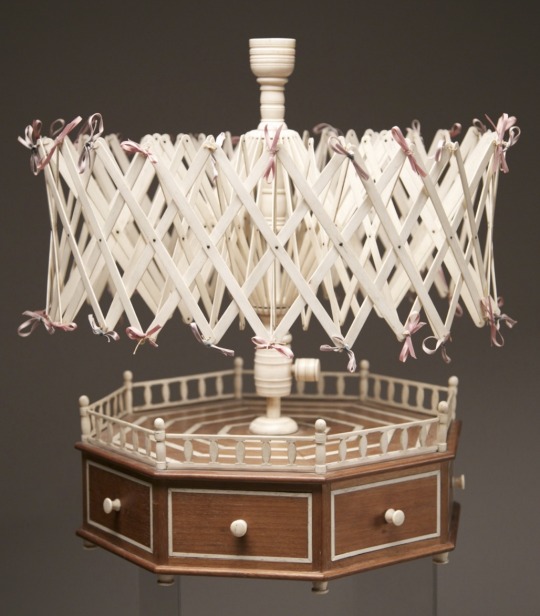
Scrimshaw captures a specific snapshot of a moment in time. On a broader scale it’s a surviving reminder of a bloody industry that flared up and winked out, preserved in the form of a long-lost ship and the spout of a long-dead whale inked on a yellowing tooth. But that snapshot also reveals the emotional world of the men who were caught up in such an industry: what they valued, what they thought about, what they missed, and what they wanted to be remembered of them.
5K notes
·
View notes
Photo
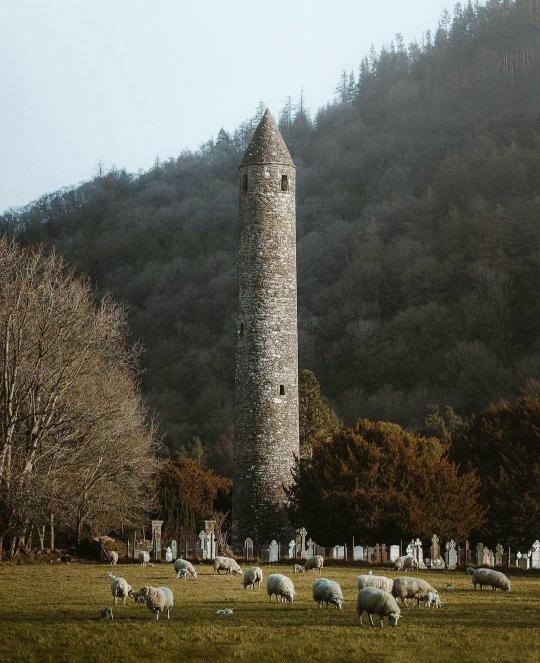
The 11th century Round Tower of Glendalough, a monastery founded in the 6th century in the Wicklow Mountains, Ireland.
20K notes
·
View notes
Text

1836 Portrait of two members of the de Thier family - Barthelemy Vieillevoye
44 notes
·
View notes
Text
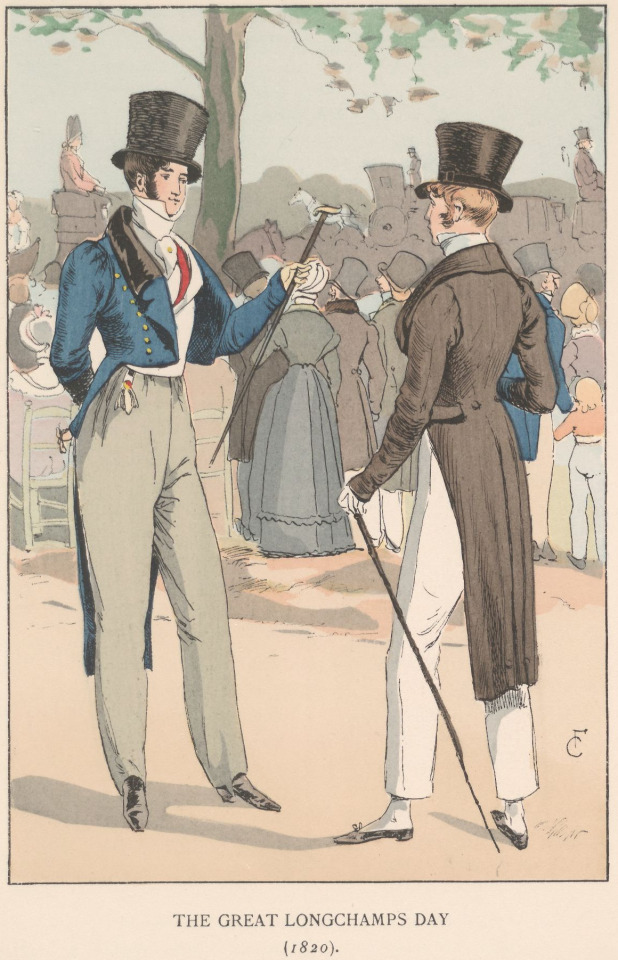
The Great Longchamps Day (1820) by François Courboin, 1898.
On higher rungs of the social ladder, English dandies and their French counterparts provoked similar shock within Paris salons. Even more than England, France was caught up in an orgy of accessories such as trinkets, charms, signet rings, seals, lorgnettes, collar buckles, breech buckles and gold slides for suspenders. Commentators observed, often with alarm, the increasing use of “little round mirrors with mother-of-pearl handles for cleaning your teeth, curling your hair, darkening your eyebrows.” Dandies spent “entire hours in the morning gazing at themselves and preening,” noted Le Journal des dames et des modes in 1820, concluding in the following year that “as women become more straightforward in their dress, young men are becoming more clothes-conscious.”
— Farid Chenoune, A History of Men’s Fashion (translated by Deke Dusinberre)
173 notes
·
View notes

